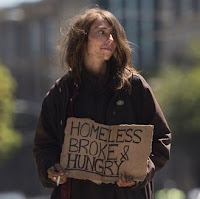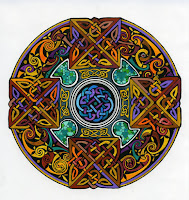Looking for something
special to give to your special someone for New Year’s? How about buying a
prayer? Not any old prayer, but a Holy Land prayer. I am referring to the
burgeoning market of buying prayers in Jerusalem.
Maybe it is more accurately called Rent-a-Prayer. For as little as the price of
a meal at the local diner you can get a bona fide holy person of your choice to
pray for you or your loved one at one of the holy sites in the Holy
City.
A business known as “Holy Land Prayer” offers packages
ranging from $15 to $40. For that you get a priest to read a prayer in the
Church of the Holy Sepulchre, on the spot where tradition says Jesus was
crucified, buried and resurrected. For more particular customers the company
“Salvation Garden” allows you to choose from a Catholic, Protestant or Orthodox
clergyman to read your prayer.
If kosher is more to your taste, a “Western Wall Prayer
Delivery Service” will have a rabbi or Torah scholar offer a prayer at the
holiest site of Judaism. Prices range from the $29 economy package to the $3,600
deluxe package that provide 10 people praying daily for 40 days, as well as
reading the entire Book of Psalms.
I am trying to wrap my mind around this phenomenon. To be
honest it smells much like selling indulgences, a practice which prompted the spiritual
Resistance known as the Protestant Reformation. I guess I am too much of a
protestant to believe that money buys any spiritual commodity, or that any
person or place is any holier than any other.
I understand the lure of sacred sites, but I am not sure
what to make of proxy prayers. I have had spiritual experiences at religious
sites in the Holy Land, but I can’t see how they are transferable to other
people for a price.
Do people believe that prayers are more likely to be
answered if prayed from a certain geographical location? Are those spots closer
to heaven? Is there less atmospheric interference? Do people believe that the
veil between heaven and earth is thinner at certain spots?
As a student of the world’s religions, I know that holy
places are a widespread phenomenon. On our trips to the Holy Land, you could
not walk more than a few steps in Jerusalem without tripping over a holy site.
Christianity, Judaism, and Islam fight over the sacred real estate of that
city.
Christians go on pilgrimages to other holy sites as well,
such as Lourdes. Muslims have a religious obligation to take a pilgrimage to
Mecca once during their lifetimes. Every Muslim is supposed to pray toward
Mecca five times a day. New Agers believe that certain spots on earth – called
spiritual vortexes - have greater spiritual power. Places like Machu Picchu, the
Great Pyramid of Giza, and Sedona, Arizona.
I love the holy places of the Holy Land. I have led several tours
of the Holy Land during my ministry, and I have seen the emotional effect that
places can have upon people. I honor these pilgrims’ experience. But for me holiness
is not in the place but the people. The holy sites are just geographical locations
of historical significance. God is not more present there than anywhere else.
In my experience, God is present everywhere. Wherever I am,
God is. The apostle Paul says our bodies are temples of God, and the Holy
Spirit dwells within us. We are walking holy sites. Wherever we walk is holy
ground. We are our own priests; no paid clergy necessary. I experience God
present here and now; I have no need to go elsewhere to be closer to God. Or to
pay for anyone to pray in such places for me.
As Jacob said of the isolated spot in the wilderness where
he camped for the night, “God is in this place and I did not realize it. This
is none other than the house of God! This is the gate of heaven!” God is wherever
we are. God is here now. All we have to do is be here now to know God’s
presence. We are living prayers. You are a holy place. Credit cards not
accepted.






















